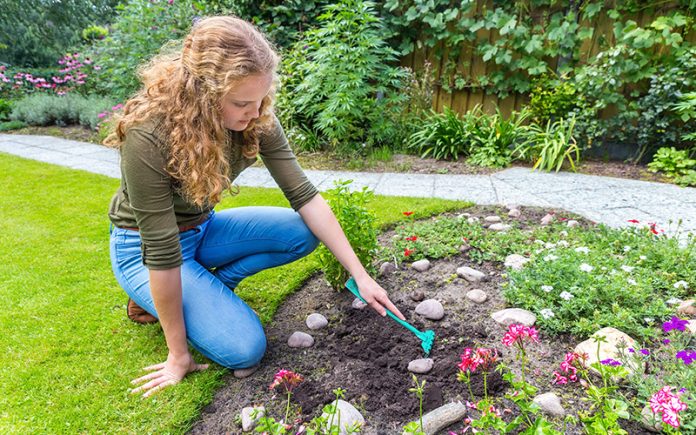Every homeowner with a lawn wants their lawn to look clean and beautiful in all seasons. It also has to be functional for kids to play and for bees and birds to habituate. The lawn landscape does change with varying seasons and to prevent your lawn from damage, lawn maintenance is necessary.
However, only mowing will not suffice. Trees, flowers, and shrubs in your lawn, as well as everything you did for your picture-perfect lawn landscape, need checking every once in a while. To indulge in lawn maintenance, you should follow a few simple rules and tips. This article will show you how to prepare your lawn and how to manage the landscape.
Lawn Maintenance: Know Different Grass Types First
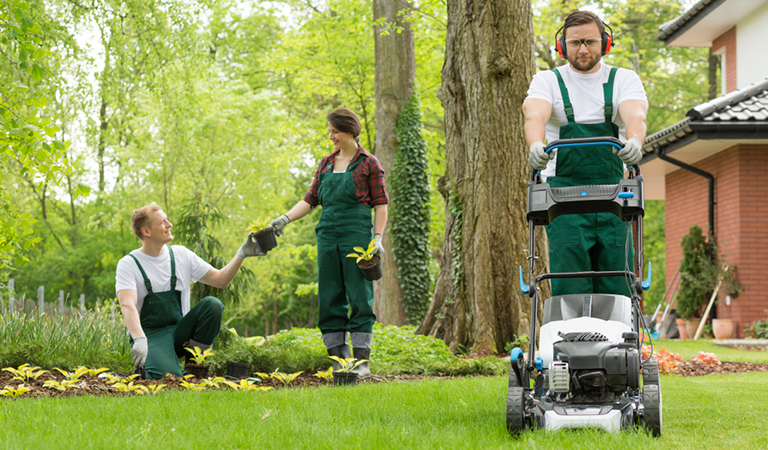
Where you live determines what kind of grass you need to plant in your lawn. There are cool-season varieties and warm-season varieties. Different states are suitable for different kinds of varieties. If you live in the mid-region of the US, your lawn could have a mixed amount of warm-season and cool-season grasses, but in general cool-season grasses work in most places. Some popular cool-season grasses include bluegrass, fescue, and perennial ryegrass while some well-known warm-season grasses are Bermuda and Zoysia.

Cool-season grass types grow well in northern and mid-US states, especially in the spring and fall. You’ll see them turn brown during the dry, hot seasons. Whether you are beginning a new lawn from bare soil or growing new grass on an existing lawn, you need to know when to fertilize. Usually, cool-season grasses need to be seeded during early spring or fall and fertilized in early spring or late fall. Remember that different grasses have different requirements. You should also know which grasses grow better under certain conditions; for example, perennial ryegrass germinates within five days, while fescues grow great in shady areas. So, you can grow fescues under fountains or trees.
Warm-season grasses are usually seeded during spring or summer. You should consult the local Cooperative Extension office to know more about fertilizing these grasses. Some are fertilized in early spring and some in late summer, so it really depends on the grass.
The requirements for every grass type is different. Once you have determined your location and picked grass for your lawn, you will need to think about fertilizing and mowing the grass. You should also test the soil pH in your lawn.
Soil Test for Acidity and Alkalinity

With the right amount of nutrients in the soil and correct pH, soil can remain fertile and allow proper growth of grass and plants. Therefore, routine soil testing is a crucial part of lawn maintenance. A pH value of less than 7.0 is acidic while more than 7.0 is alkaline. The recommended pH range for most plants is 6.2 to 7.2, but some plants may prefer higher or lower pH. For example, azaleas like to grow in acidic soils.
Soil test kits are available these days that can measure soil pH as well as the availability of certain essential minerals. There are kits that can effectively measure the amount of soil moisture.
The local Cooperative Extension office could do the test for you and also make suggestions for you, but if you’re an avid gardener you can do it yourself. Test kits could come with vials, tablets or testing meters. The soil could be different in various parts of your lawn, so you need to collect samples from various areas.
In a particular area, dig a few holes up to 8 inches deep and take 0.5 inch slices of soil from each hole in a bucket. Mix the soil and allow it to dry if it is wet. Then test it or take a pint of soil as a sample and send it for testing. In order to verify the results, repeat the process. You probably know that moist soil often gives false readings, so make sure the soil is dry.
How to Reduce Soil Acidity:
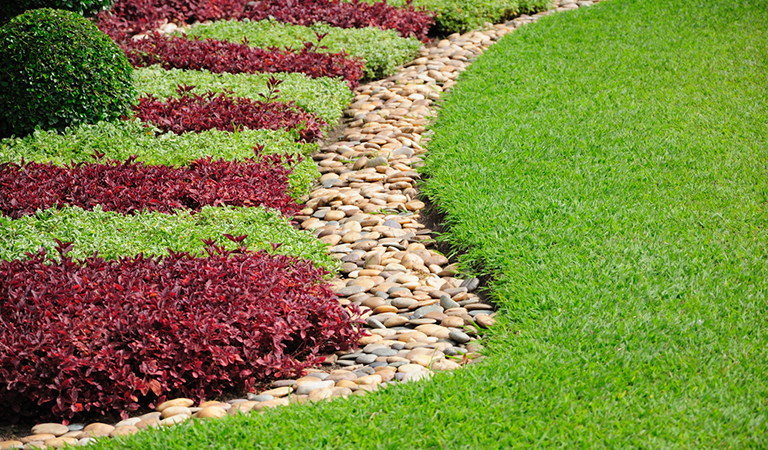
Soils could be naturally acidic in some states, such as Alaska and Hawaii. Weeds love acidic soil. A change in pH could reduce the effectiveness of fertilizers and insecticides that you might use on your lawn. You can use limestone and garden lime to reduce acidity. You can apply any time of the year, but it’s recommended that you use lime in the fall season.
How to Reduce Soil Alkalinity:
Areas that have less rainfall could have alkaline soils that usually have a lower ability to uptake nutrients. You could use organic soil conditioners containing sulfur and gypsum. By applying organic compost regularly, you could improve the overall soil condition.
Landscape Management with Lawn Mowers
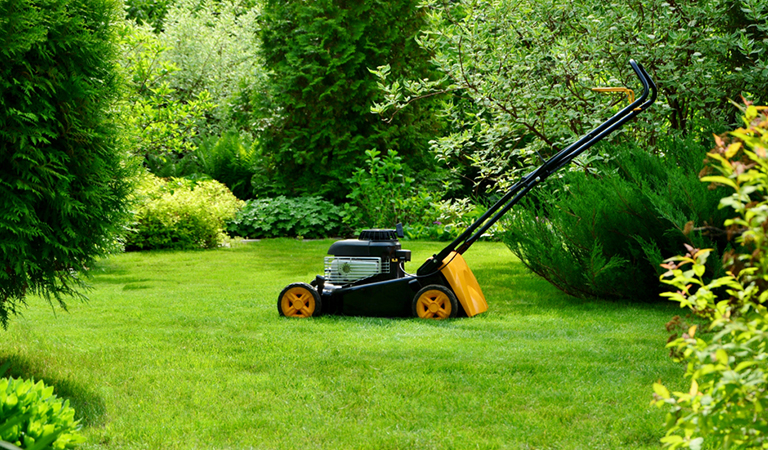
Mowing is basically pruning off grass so that the grass can grow healthily without any interference of weeds. Depending on the type of grass, you have to use your lawn mower according to a certain height. We recommend using electric corded lawn mowers in this case. If the grass is cut properly according to the height and grass type, the lawn will look even and spotless. Usually, only 1/3 rd of the grass blade height is cut off. Too much mowing more than this height can cause browning. This happens because the surface area for photosynthesis gets reduced. Weeds could grow even amongst the shortest grass type. Pests and disease could take over the weakened grass and destroy your lawn. So when you use your lawn mower, use it wisely following these tips:
- You should only mow when the grass is relatively dry. When grass is wet, the blades don’t stand upright so mowing becomes uneven and messy.
- Don’t mow when it’s way too hot or it could cause heat stress.
- Always ensure that your lawn mower’s blades are sharp
- Keep using different directions every time you go mowing. Alternating mowing patterns cause the growth to remain upright and prevents grass from leaning on a side.
- No matter what lawn mower you are using, always mow in a forward direction.
- Discharge clippings all over the lawn. Eventually, those will decompose and return nutrients back to the soil, which will further promote grass growth. You can keep clippings in a bag and compost them.
- In shaded areas, grass competes with the trees for sunlight, nutrients and water. Cut these grasses higher.
- Use lawn rollers to even out your lawn surface.
- Do not mow too frequently.
- If it’s new grass, wait for a month before you mow it for the first time.
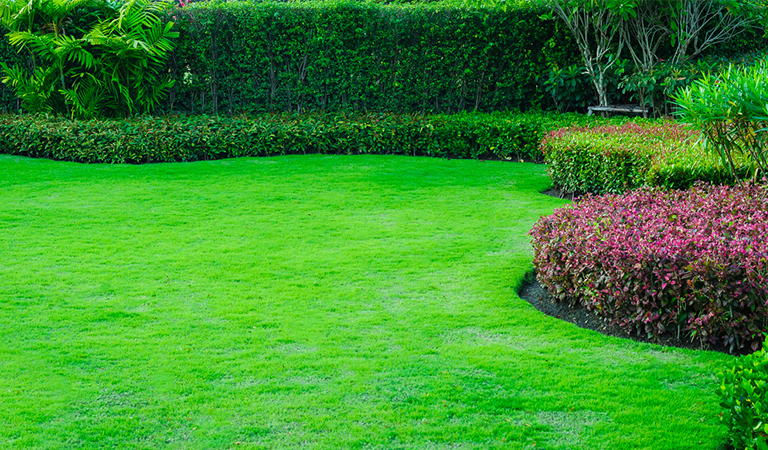
Lawn landscape maintenance could be quite tedious, but with proper care you can get yourself a beautiful lawn that is pleasing to the eye. If shrubs and trees outgrow themselves then trim the leaves off to maintain the shapes. While mowing your lawn keep children and pets away. Wear protective clothing, especially for your eyes. Sometimes your lawn could have bare spots that are easily fixable. All you have to do is dig holes in these areas at least six inches deep. Add some topsoil and new grass seeds and level with the surrounding surface. Add water to these spots and ensure they don’t get dried too often. Once grass growth is observed, add fertilizer and mow these areas with the rest of the lawn. Observe for one year and hopefully, you won’t see bare spots anymore. Keeping a lawn clean and healthy with the right gardening equipment is a favorite pastime hobby for many gardeners and you could enjoy it as well. Following these tips, you can become a pro in lawn maintenance in no time.


